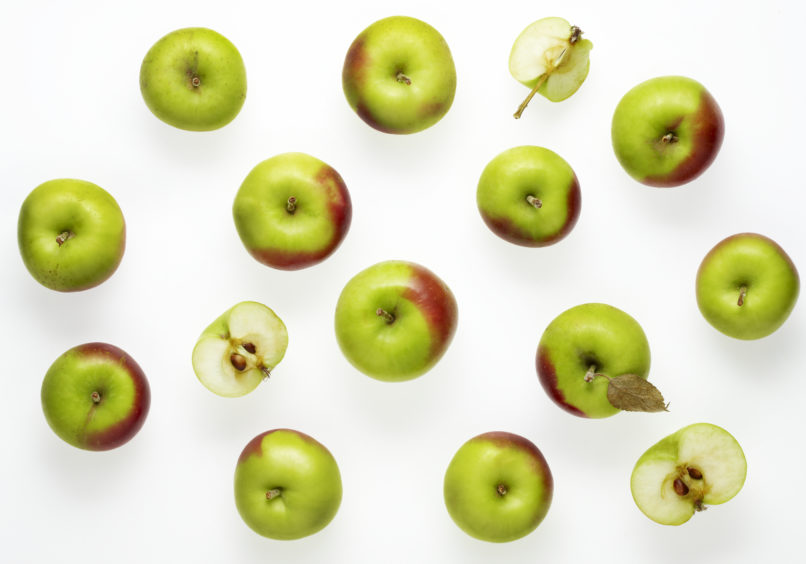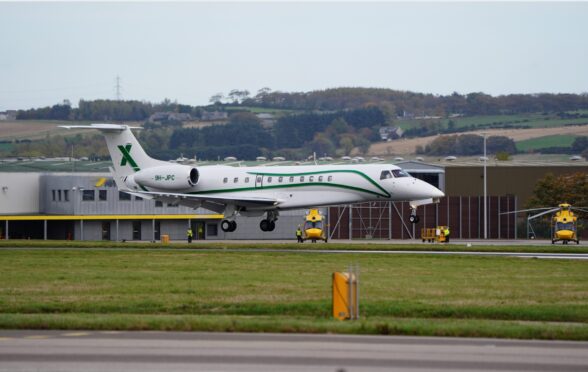Michael Alexander gets to the core of why Britain’s wild apples are in decline.
When archaeologists investigated a Neolithic pit at Courthill Farm, north of Inverkeilor, Angus, in 2012, it provided firm evidence that native crab apples were being processed for storage in the area at least 4000 years ago.
But according to a new study, the future of the British wild apple looks bleak with the last bastions of the species identified in parts of Scotland and northern England.
The survey by Royal Botanic Garden Edinburgh (RBGE) researcher Markus Ruhsam and Forestry Consultant Rick Worrell, supported by Forestry Commission Scotland, showed that over the rest of northern Britain the wild apple, commonly known as crab apple, is disappearing from woods and hedgerows as it hybridises with cultivated specimens.
DNA analysis shows that the genetic make-up of the apples in the UK countryside is complex with individuals representing not only pure wild apples, but also crosses between wild and cultivated apples, feral or ‘escaped’ domestic apples derived from casually discarded apple cores and a few Chinese and Siberian varieties planted as decorative trees.
The results showed that around 30% of what look like pure native wild apple trees are, in fact, now hybrids – containing varying quantities of genetic material from cultivated types.
Such hybrid trees are most frequent in areas, such as the heavily-farmed lowlands of Scotland’s Central Belt – with the most intensive land use and least natural woodland.
Here, around half of all trees were found to be hybrids.
In contrast, many upland areas – where ancient woodland is more common – were identified as strongholds for the native species, with around 75 to 90 % of trees still pure wild apples.
These last bastions included the southern Highlands, particularly around the Loch Lomond and Trossachs National Park, parts of Dumfries & Galloway and England’s Lake District.
A Royal Botanic Garden Edinburgh spokeswoman said there are many wild apples in the Perthshire hills but as you come east into Angus they seem to fade out – especially as you get into the lowlands.
“The most eastern wild apple we found was near Straloch, in Strathardle, near Kirkmichael,” she said.
“We suspect there are probably some tucked away in the Angus Glens, but we never got to survey there: maybe someone locally would be interested in having a good look ? “However one of the largest hybrid apples we found was in Abernyte , almost in sight of Dundee.”
Perthshire-based orchard expert Andrew ‘Appletreeman’ Lear described the report as “interesting”.
He said: “Are they talking about the Malus Sieversii fron the Tienshan mountains (the original parent of most of our domestic apples) or our local Malus sylvestris in Europe?
“A lot of our wild trees (today) are in fact cores, thrown out of train windows for example, or in the hedges on roadsides, so are in fact seedlings of domestic varieties.
“I see a lot of Golden Delicious seedlings in the British countryside. They are usually multi-stemmed, and can have thorns, yet may be quite edible. “
During the past 800 years, traditional orchards have played an important role around the Tay coast – often with links to medieval monasteries.
The Carse of Gowrie orchards began in the 1200s with French monks moving into the area as they branched out further northwards bringing the fruit trees with them. Newburgh in Fife also had orchards linked to the monks there.
By the mid-19th century, the Carse and Perthshire were premier apple growing areas in Britain with the area’s seed stock predominantly sourcing the colonised world.
At one point, one Carse orchard contained 10,000 trees (just one original tree remains today) – created by Patrick Matthew, a silvi-arable farmer, reformist politician, businessman, forester, orchardist, fruit hybridizer and author, whose books focused on maintaining the naval timber for shipping and on advising how best to colonialize the so-called “New World”.
In 1845, Longforgan alone made £500 from orchard revenue which relates to over £57,000 today.
This included the cultivation of heritage varieties like the Lass O’Gowrie, a juicy cooking apple, and The Bloody Ploughman, first recorded in the Carse in 1883.
The story goes that a ploughman was caught stealing apples from the Megginch Estate and shot dead by a gamekeeper.
He dropped the apples and the tree which grew from this seed produced this apple, which has dark red skin, white flesh with pink ‘blood’ stains.
However, Fiona Ross of Carse of Gowrie Sustainability said there are very few apples left in the old orchards of the Carse today.
“The reduction of woodland and development have caused drastic results for wildlife and trees,” she said.
“In the Carse of Gowrie, in the 19th century it was a landscape of orchards, it is now a panoramic view of polytunnels for soft fruits.
“Changing farming and consumer tastes change the landscape away from heritage varieties to soft fruit for Muller’
“The historic orchards of the Carse of Gowrie in places like Grange and Port Allen are all descended, grafted, from trees brought here by the monks.
“Whilst, first generation, pear trees can live up to 500 years, apples live to up to 300 years.
“The historic Carse varieties have been DNA tested and no longer resemble their French descendants as they have evolved to be their own Scottish varieties.
“Cross-pollination is inevitable in all fruit trees, including crab apples”.
Today, many environmental groups work to preserve what remains of these old orchards, while modern businesses like Cairn O’ Mohr at Errol tap into the area’s age-old links with fruit production – including cider made with some of the old varieties and a mixture of modern ones from round about.
However, new plantations are also planned with Carse of Gowrie Sustainability planting out a new Patrick Matthew commercial orchard in March designed on the premise that ‘If Patrick Matthew were alive today, what kind of orchard would he plant out?’?
Sarah Davidson of charity Sustainable Cupar’s Fruit and Blossom Group has been working to help preserve remnants of centuries-old pear and apple orchards in Cupar, Fife. However, many of the varieties remain unknown.
She said: “My thoughts on this are that with the wild apple (Malus sylvestrus) there is the possibility of grafting good genetic stock quite easily, thereby, the possibility of building up the population if there was a will to do it.
“Spontaneous crosses between the wild apple and other suitable plants are inevitable, this cannot be stopped, but at least this research highlights the state of the population of wild apple in Scotland.
“I am sure this will be helpful in guiding future practice in forestry planting.
“Native tree planting will hopefully become the norm repopulating the Scottish mountains and valleys with native species that enable the native flora and fauna.”















